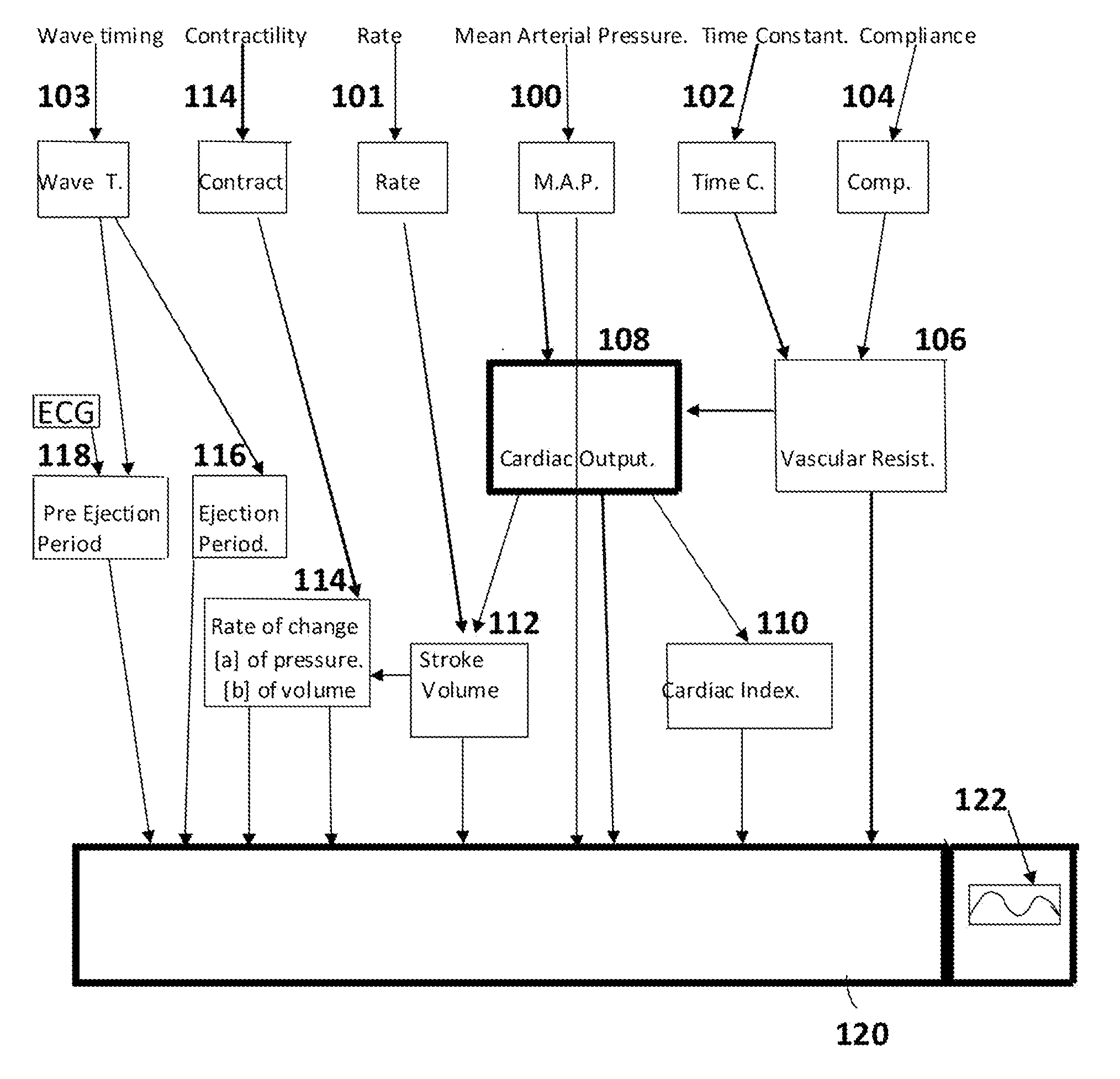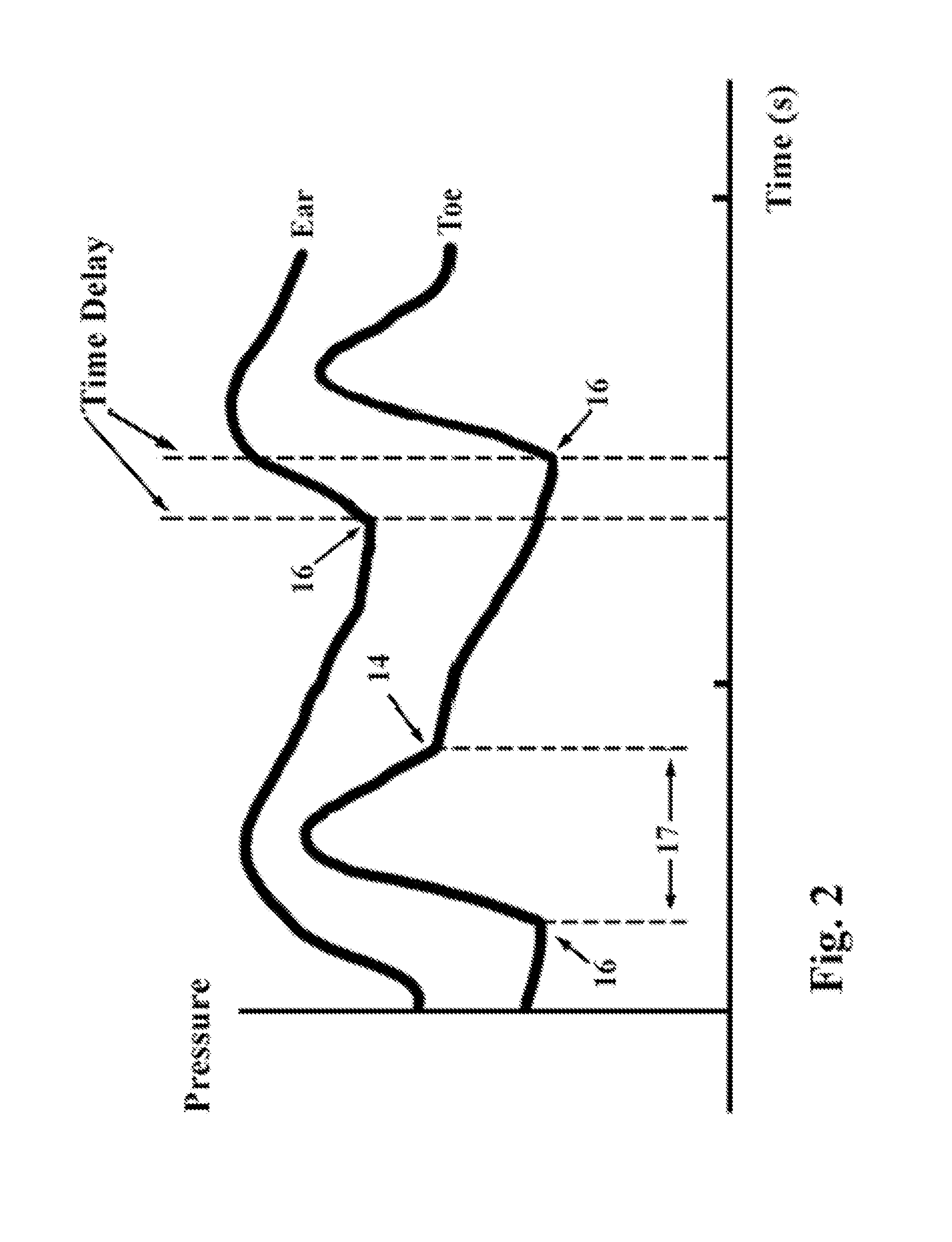Method and apparatus for non-invasive determination of cardiac output
a non-invasive, cardiac output technology, applied in the direction of heart/pulse rate measurement, blood vessel evaluation, sensor, etc., can solve the problems of non-scaling of the derived pressure trace, carries the risk of tissue damage from any sustained pressure around the finger, and errors from using an algorithm for deriving compliance, etc., to achieve convenient, accurate and non-invasive results
- Summary
- Abstract
- Description
- Claims
- Application Information
AI Technical Summary
Benefits of technology
Problems solved by technology
Method used
Image
Examples
Embodiment Construction
[0021]Sensors Used and an Explanation of the Information Provided.
[0022]As shown in FIG. 1, the trace obtained from the optical transducer attached to the finger, rises and falls with the activity of the heart and corresponds to an arterial pressure wave obtained from an intra-arterial catheter. The rising portion 10 corresponds to the cardiac ejection phase. The highest point corresponds to the systolic pressure 12. Towards the end of the ejection phase the trace falls. About one third of the time along the descending portion an irregularity called the dicrotic notch often appears, (FIG. 214), and this corresponds to closure of the aortic valve with attendant pressure disturbance. The period from the commencement of ventricular contraction until the closure of the aortic valve is the systolic phase (FIG. 217), and the period from the closure of the aortic valve to the next ventricular contraction is the diastolic phase. The lowest point of the trace corresponds to the diastolic pre...
PUM
 Login to View More
Login to View More Abstract
Description
Claims
Application Information
 Login to View More
Login to View More - R&D
- Intellectual Property
- Life Sciences
- Materials
- Tech Scout
- Unparalleled Data Quality
- Higher Quality Content
- 60% Fewer Hallucinations
Browse by: Latest US Patents, China's latest patents, Technical Efficacy Thesaurus, Application Domain, Technology Topic, Popular Technical Reports.
© 2025 PatSnap. All rights reserved.Legal|Privacy policy|Modern Slavery Act Transparency Statement|Sitemap|About US| Contact US: help@patsnap.com



